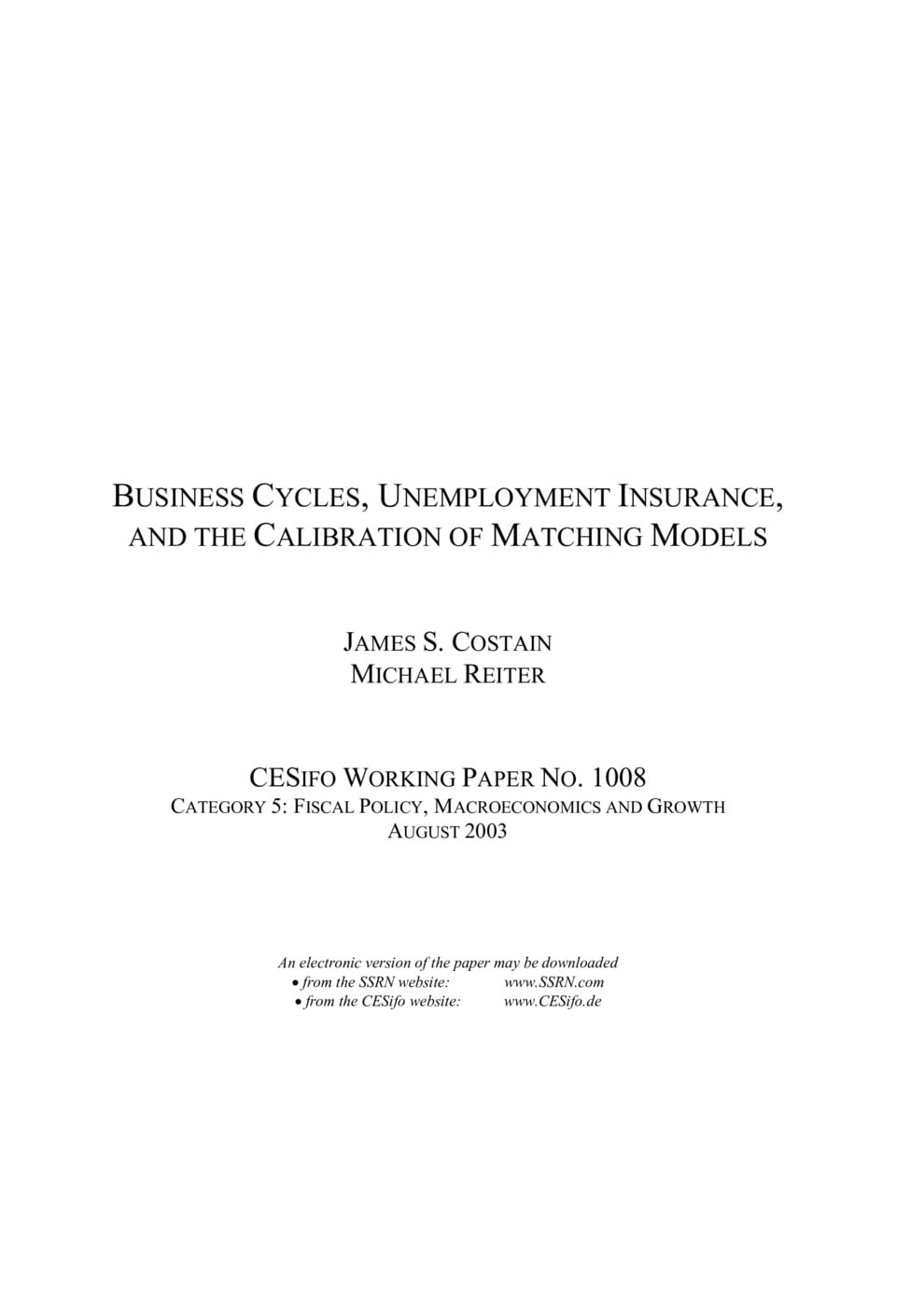Business Cycles, Unemployment Insurance, and the Calibration of Matching Models
CESifo, Munich, 2003
CESifo Working Paper No. 1008

This paper points out an empirical failing of real business cycle models in which unemployment is endogenized through a matching function. One can easily choose a calibration to make the cyclical fluctuation in unemployment as large in the model as it is in the data, or to make the response of unemployment to a change in the unemployment benefit as small in the model as it is in the data. We show with a simple analytical calculation that in the standard job matching model, one cannot do both: improving the fit along one dimension makes it worse along the other. This conclusion is robust to the inclusion of capital, variable search intensity, variable match separation, or efficiency wages. We also propose two possible resolutions of the problem. Both sticky wages and embodied technological progress raise the business cycle variability of unemployment, without greatly changing the effects of policies, because they both make the flow of surplus to the firm more procyclical.
Fiscal Policy, Macroeconomics and Growth